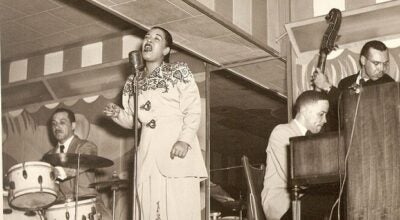Who gerrymanders?
Published 1:45 pm Wednesday, January 31, 2018
All majority parties gerrymander. What is gerrymandering and when does it happen? Gerrymandering is drawing election districts to give an advantage to the majority party after the census that is required every 10 years. The name comes from the state of Massachusetts more than 200 years ago after the redrawing of districts under Gov. Gerry left a district that some said looked like a mythical salamander. Gov. Gerry’s surname and salamander were combined.
It was used in Virginia in the last century by the Democrats, not to affect the Republicans (because they were so few in the state) but rather to water down the political power of minorities. Up until 1980, they drew multi-member districts to prevent election of minorities in Richmond, Norfolk and elsewhere. The courts ruled in the early ‘80s that that trick had to end. In the early ‘90s, more minority districts were drawn after redistricting, better following the federal Justice Department’s standards. This was the first redistricting that was done with the use of computers which could better identify historic voting patterns.
The redistricting after the 2000 census was the first in which Republicans had any say. Naturally, they followed the steps that the Democrats had followed. They drew districts that favored themselves. The 2011 redistricting was the first in which both parties had a say, the Republicans in the House of Delegates and the Democrats in the Senate. Each party drew lines to serve their parties. The Democrats immediately lost their majority that November, however, not before creating many strange districts designed to protect their incumbents.
The current 15th District, which I am honored to represent, is the perfect example of gerrymandering. When I won the seat in 2000 after the death of Richard Holland, the district ran from Suffolk to Appomattox. In 2011, being the junior Republican in the Senate, the district was changed to a north-south-oriented district, from the North Carolina line to the far reaches of Fluvanna and Amherst counties. In 2011, the Democrats took 60 percent of that territory away and replaced that with Nottoway and parts of Prince George, Dinwiddie, Campbell, Pittsylvania and Danville. Their goal was to protect their incumbents, Henry Marsh and Roscoe Reynolds.
That brings us to the last twelve months. What they could not win at the polls, they are trying to win in the courts. Using an auxiliary organization, they brought suit against the 2011 Senate redistricting. Last week, a bill was introduced that would have required the next redistricting to be done following county, city and town limits as closely as possible to avoid splitting them unnecessarily. The Democrats argued on the Senate floor at the end of the week against that policy. It would be very enlightening for everyone to watch a copy of the Friday floor debate. After an election in the House last fall that focused on redistricting unfairness, those who led the last redistricting argued about how positive it was to split localities.
Frank Ruff represents Lunenburg in the state Senate. His email address is Sen. Ruff@verizon.net.



